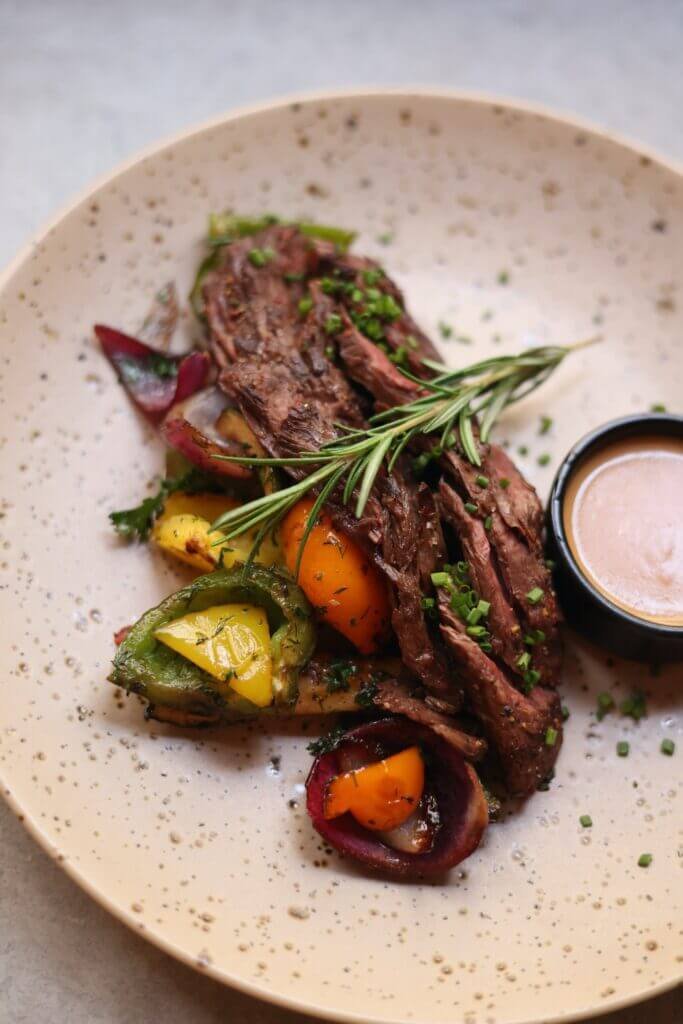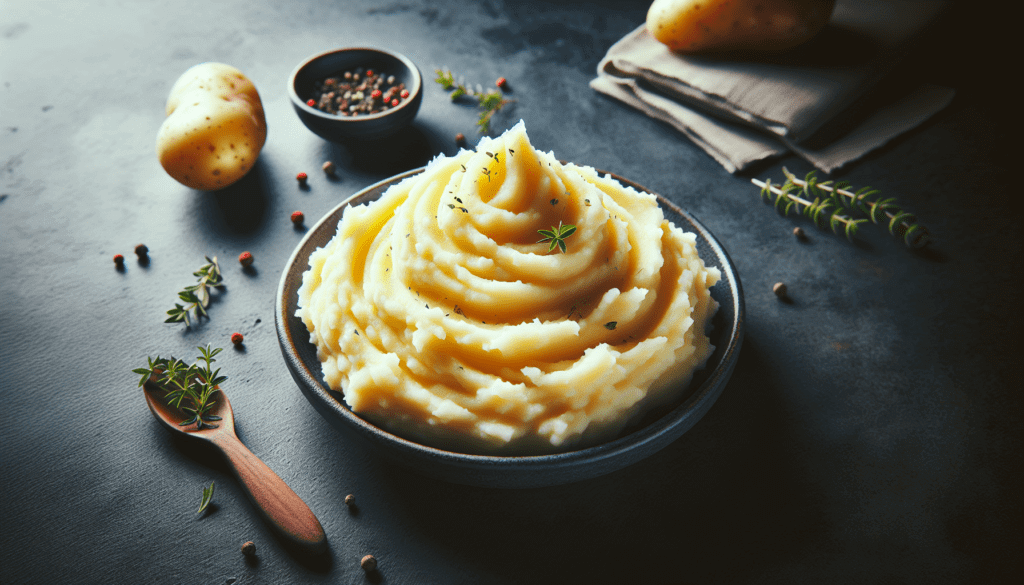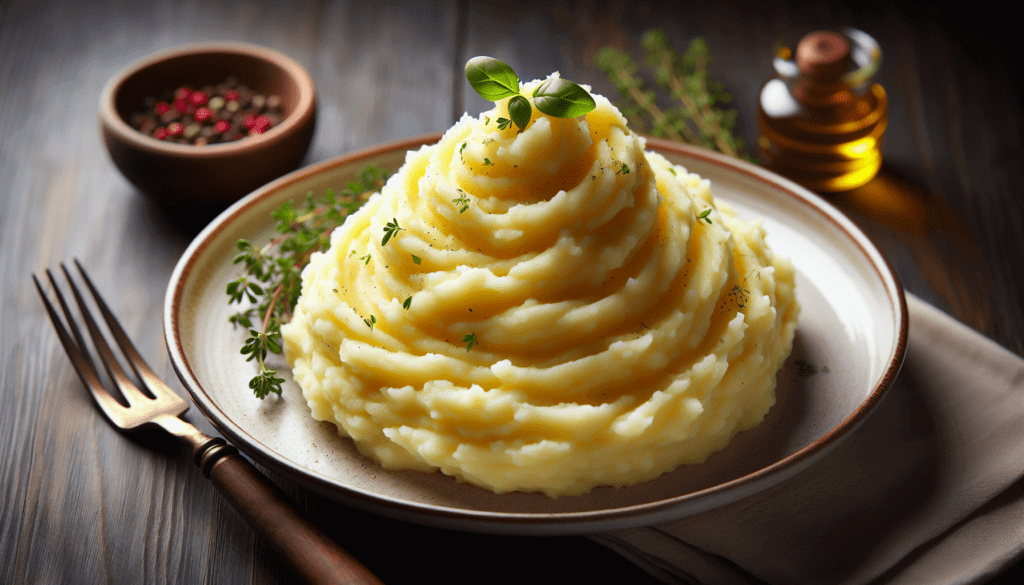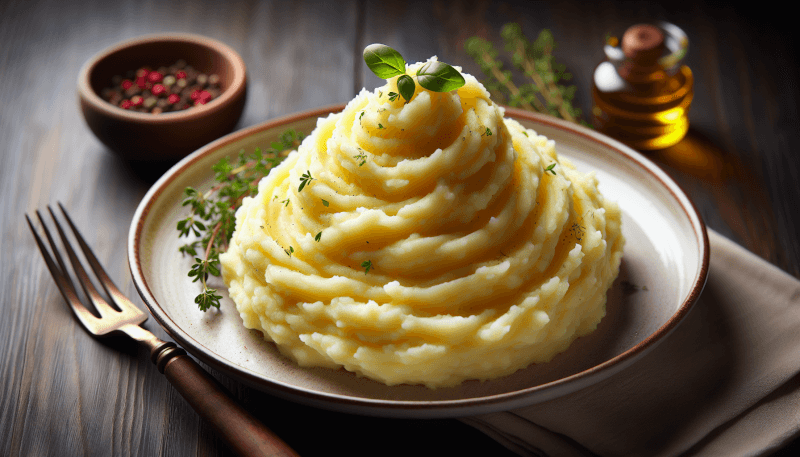So, you’re looking to whip up a batch of creamy, dreamy mashed potatoes? Look no further! In this article, we’ll be sharing the best methods for cooking the ultimate classic mashed potatoes. Whether you prefer them silky-smooth or with a bit of texture, we’ve got you covered. Get ready to elevate your mashed potato game to a whole new level of deliciousness!

Choosing the Right Potatoes
When it comes to making mashed potatoes, choosing the right type of potato is crucial. The three most commonly used varieties are Russet Potatoes, Yukon Gold Potatoes, and Red Potatoes.
Russet Potatoes are known for their high starch content, making them perfect for creating fluffy and light mashed potatoes. They have a rough skin that needs to be peeled off, but they hold their shape well when boiled.
Yukon Gold Potatoes, on the other hand, have a smoother and buttery texture. They are a great option if you prefer a creamier and slightly richer mashed potato. The skin is thin and can be left on for added flavor and texture.
Red Potatoes have a lower starch content, giving them a firmer texture. They have a red skin and a slightly sweet flavor. When mashed, they tend to be more chunky and are a good choice if you enjoy a rustic-style mashed potato.
Preparing the Potatoes
To achieve the perfect mashed potato, you need to start with proper preparation. This involves peeling, cutting, and boiling the potatoes.
Peeling the Potatoes
If you have chosen Russet Potatoes or prefer a smoother texture, peeling the potatoes is necessary. Using a vegetable peeler, gently remove the skin from the potatoes. Make sure to remove any blemishes or eyes as well.
Cutting the Potatoes
Once peeled, cut the potatoes into evenly sized pieces. This ensures even cooking and prevents some pieces from being overcooked while others remain undercooked. Aim for pieces that are roughly 1 to 2 inches in size.
Boiling the Potatoes
Place the cut potatoes in a large pot and cover them with cold water. Add a pinch of salt to the water to enhance the flavor. Bring the water to a boil over medium-high heat and cook the potatoes until they are fork-tender. This usually takes around 15 to 20 minutes, depending on the size of the potato pieces.
Mashing the Potatoes
After the potatoes are boiled and drained, it’s time to turn them into delicious mashed potatoes. There are several methods you can use to achieve a creamy and lump-free consistency.
Using a Potato Masher
The traditional way of mashing potatoes is using a potato masher. Simply place the drained potatoes back into the pot and use the masher to press down and break up the potatoes until they reach your desired consistency. Be careful not to overmix, as this can result in a gummy texture.
Using a Food Processor
For a smoother and creamier mashed potato, you can use a food processor. Transfer the drained potatoes into the processor and pulse until they are mashed to your liking. Avoid over-processing, as it can lead to a glue-like consistency.
Using a Hand Mixer
If you prefer a lighter and fluffier texture, a hand mixer is a great tool to use. Add the drained potatoes to a bowl and use the hand mixer on low speed to beat the potatoes until they are mashed and creamy. This method incorporates air and creates a lighter consistency.
Adding Flavor
While mashed potatoes can be deliciously simple on their own, adding a touch of flavor can take them to the next level. Here are a few popular options for enhancing the taste of your mashed potatoes.
Butter
Butter is a classic addition to mashed potatoes, providing richness and a silky texture. Use unsalted butter for more control over the saltiness of the dish. Start by adding a few tablespoons of butter, and adjust to your taste preferences.
Milk or Cream
To achieve a creamier mashed potato, add milk or cream. Pour small amounts at a time while mashing, until the desired consistency is reached. The fat content in the milk or cream adds richness to the dish. For a lighter option, you can use low-fat milk or even vegetable broth.
Garlic
Garlic adds a wonderful savory flavor to mashed potatoes. You can either boil a few cloves with the potatoes or add roasted garlic for a more mellow and nutty taste. Mash the garlic together with the potatoes for even distribution.
Herbs and Seasonings
Incorporating herbs and seasonings can elevate the taste of your mashed potatoes. Fresh herbs like chives, parsley, or dill add a pop of freshness, while dried herbs such as thyme or rosemary bring a deeper flavor. Season with salt and pepper to taste, and consider adding spices like paprika or nutmeg for an extra kick.

Achieving the Perfect Texture
The texture of mashed potatoes can make or break the dish. Aim for a consistency that is smooth, creamy, and free of lumps.
Consistency
Decide on the level of creaminess you prefer for your mashed potatoes. Some people like them slightly chunky, while others prefer a completely smooth texture. Adjust the mashing time according to your personal preference.
Creaminess
The addition of butter, milk, or cream contributes to the creaminess of mashed potatoes. Start with small amounts and gradually add more until you reach your desired level of creaminess. Remember to taste as you go, as it’s easier to add more ingredients than to remove them.
Avoiding Lumps
To avoid lumps in your mashed potatoes, make sure to cook the potatoes until they are fork-tender. Overcooking can lead to a watery consistency, while undercooking can result in lumps. Take your time to thoroughly mash the potatoes and incorporate the other ingredients evenly.
Alternative Ingredients
If you’re looking to add some variety to your mashed potatoes, there are a few alternative ingredients worth considering.
Sweet Potatoes
Substituting regular potatoes with sweet potatoes can bring a delightful twist to your mashed potato recipe. Sweet potatoes have a naturally sweet flavor and a vibrant orange color. They can be mashed in the same way as regular potatoes and pair well with warm spices like cinnamon or nutmeg.
Cauliflower
For a low-carb or lighter alternative, cauliflower can be used in place of potatoes. Steam or boil cauliflower florets until tender, then mash them using the same techniques as mashed potatoes. While the texture will be slightly different, cauliflower mash can be equally delicious and nutritious.

Creative Variations
Looking to take your mashed potatoes to the next level? Try these creative variations to impress your guests or simply add some excitement to your meal.
Loaded Mashed Potatoes
For a decadent twist, try making loaded mashed potatoes. Fold in crispy cooked bacon, shredded cheese, and finely chopped green onions into your mashed potatoes. The combination of flavors creates a dish that is both creamy and indulgent.
Truffle Mashed Potatoes
To add a touch of luxury to your mashed potatoes, consider adding truffle oil or truffle butter. The distinct earthy and aromatic flavor of truffles will elevate your dish to new heights. Drizzle a small amount over your mashed potatoes and mix it in for a gourmet experience.
Baked Mashed Potatoes
If you want to take your mashed potatoes to a whole new level of deliciousness, try baking them. Simply spread the mashed potatoes into a baking dish, sprinkle with cheese, and bake in the oven until golden and bubbling. This creates a crispy top layer while maintaining the creamy center.
Serving Ideas
Mashed potatoes are a versatile side dish that pairs well with a variety of flavors. Here are a few serving ideas to consider.
Classic Gravy
Drizzle your mashed potatoes with rich, flavorful gravy. Whether it’s turkey gravy, beef gravy, or vegetarian gravy, the combination creates a comforting and satisfying dish. The creamy texture of mashed potatoes is the perfect canvas for gravy to shine.
Crispy Onion Topping
For added texture and a burst of flavor, top your mashed potatoes with crispy fried onions. These crispy onion toppings add a delightful crunch and can be found in most grocery stores. Simply sprinkle them over your mashed potatoes for an extra special touch.
Cheese and Bacon
Indulge in the classic combination of cheese and bacon by crumbling cooked bacon and melting cheese over your mashed potatoes. The combination of salty bacon and gooey cheese takes mashed potatoes to a whole new level of savory goodness.

Make-Ahead Tips
When preparing mashed potatoes for a special occasion or planning ahead, here are some useful tips to ensure they stay fresh and delicious.
Reheating Mashed Potatoes
To reheat mashed potatoes, add a splash of milk or cream and gently heat them in a saucepan over low heat. Stir occasionally to prevent sticking or burning. The added liquid helps restore the creamy texture and prevents the potatoes from drying out.
Freezing Mashed Potatoes
You can freeze mashed potatoes for future use. Allow the mashed potatoes to cool completely, then transfer them to a freezer-safe container or zip-top bag. When ready to use, thaw the mashed potatoes in the refrigerator overnight and reheat them as directed above.
Expert Tips and Tricks
For those looking to take their mashed potatoes to a whole new level, these expert tips and tricks are worth considering.
Using Waxy Potatoes for Extra Creaminess
If you want an extra creamy and smooth mashed potato, try using waxy potatoes such as Yukon Gold or Red Potatoes. They have a lower starch content and hold their shape better when boiled, resulting in a creamier texture.
Warming Milk or Cream
To ensure your mashed potatoes stay warm and prevent them from cooling too quickly, warm the milk or cream before adding it to the mashed potatoes. This helps maintain the desired temperature and prevents the mashed potatoes from becoming lumpy.
Adding Butter Gradually
To achieve a silky and rich texture, add the butter to the mashed potatoes in small increments. This allows the butter to fully incorporate into the potatoes and evenly distribute its flavor. Gradually adding butter also prevents the mashed potatoes from becoming greasy.
By following these tips and tricks, you’re guaranteed to make the most delicious and perfectly textured mashed potatoes. Experiment with different variations and serving ideas to create a dish that suits your taste preferences. Whether you’re cooking a comforting family meal or preparing for a special occasion, mashed potatoes are a versatile and timeless side dish that never fails to impress. Enjoy!



